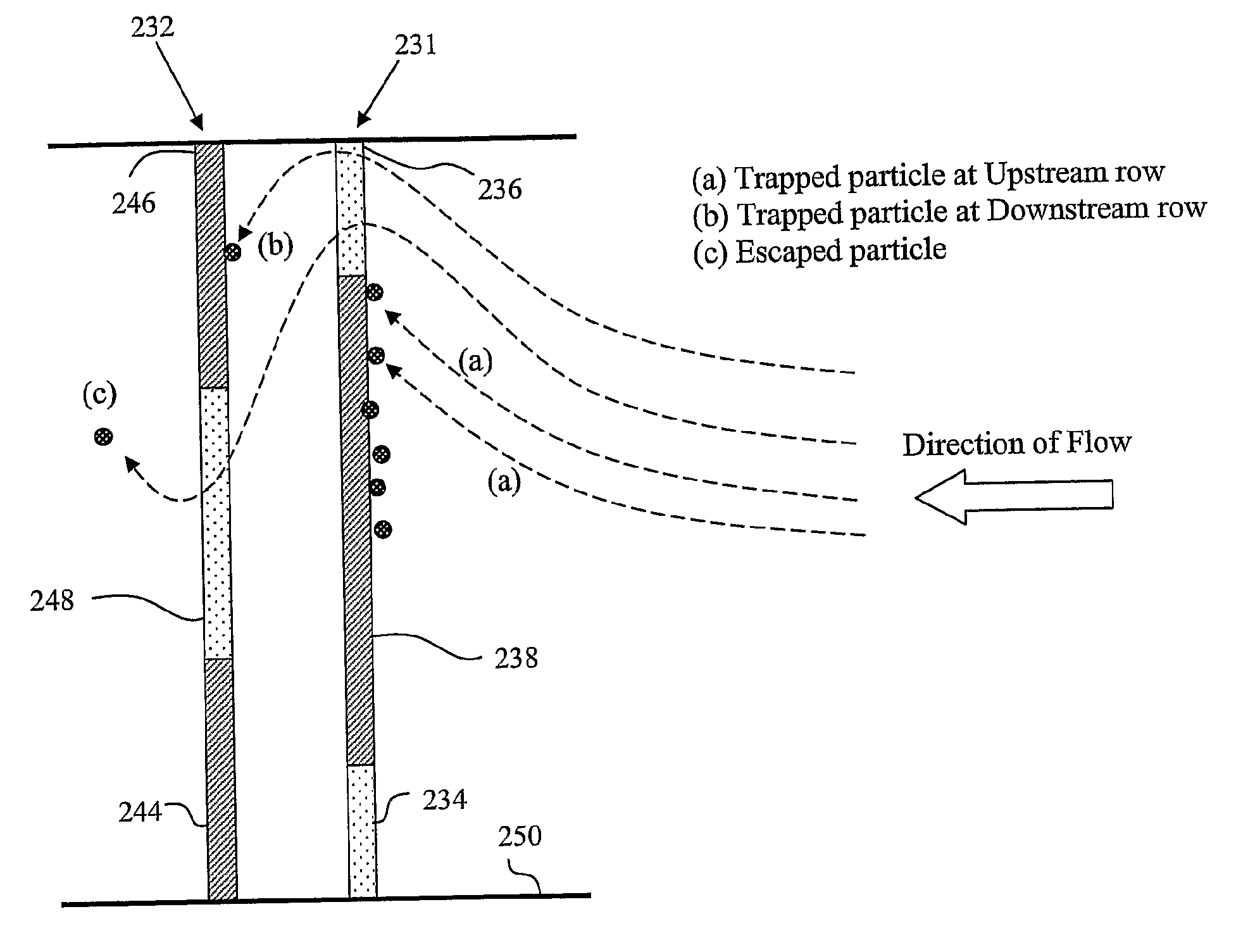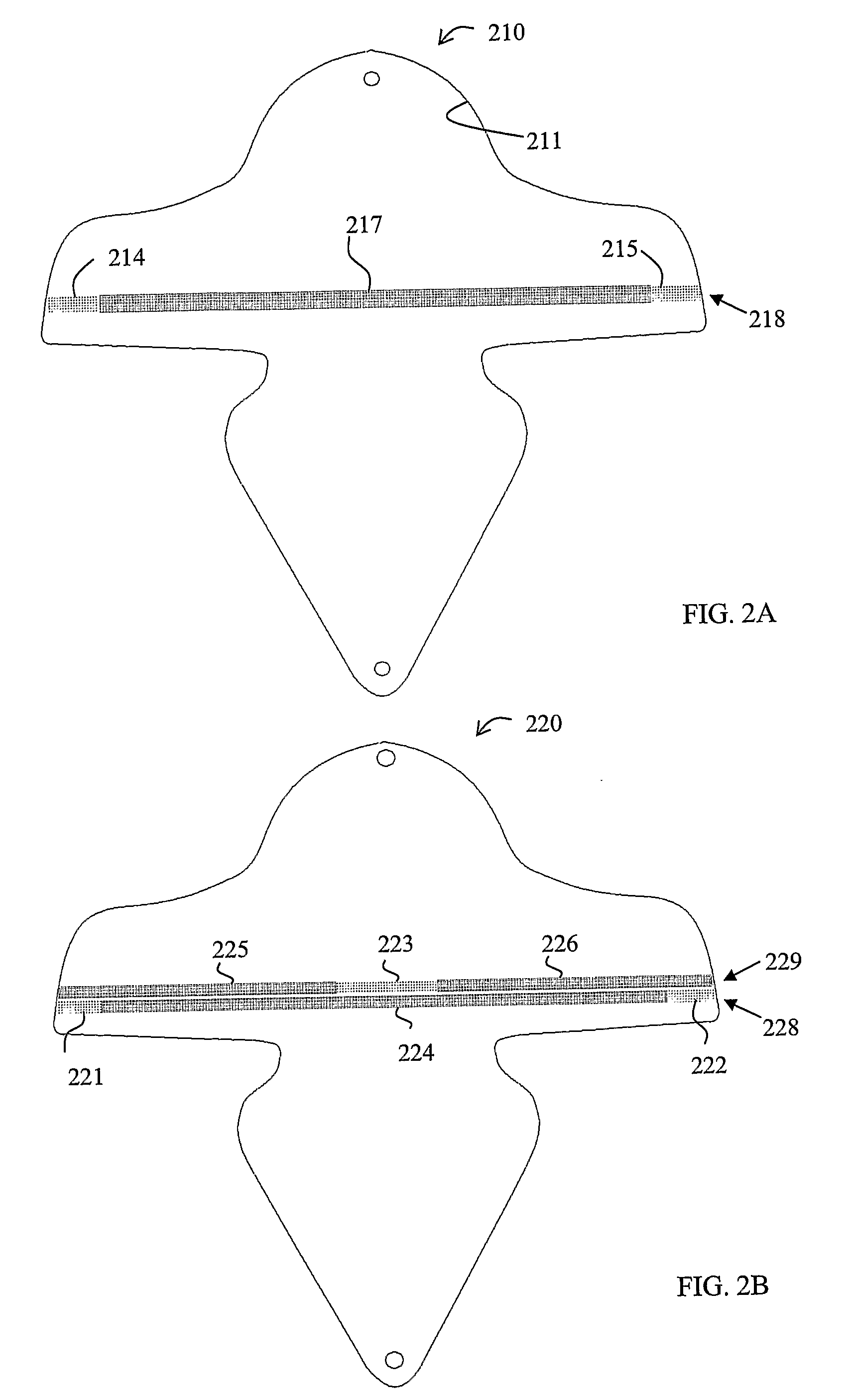Microfluidic filtration unit, device and methods thereof
a microfluidic filtration and microfluidic technology, applied in the field of microfluidic filtration devices, can solve the problems of large particles such as red blood cells, need about 10 minutes to diffuse 10 microns, and the effect of reducing the speed at which fluid flows, reducing the flow pressure in the filtration barrier, and less sensitiv
- Summary
- Abstract
- Description
- Claims
- Application Information
AI Technical Summary
Benefits of technology
Problems solved by technology
Method used
Image
Examples
example 1
Fabrication
[0072]The raindrop shaped pillars were fabricated by standard micromachining techniques. According to one process scheme which the inventors have developed for this invention, the following process steps were carried out to fabricate the pillars as shown in FIG. 9. Firstly, a resist mask was patterned, using silicon dioxide as hard mask (FIG. 9A). The oxide hard mask was subsequently opened and deep silicon etching was carried out to achieve an etch depth of about 30 μm (FIG. 9B). The oxide hard mask was then removed and the etched-out gaps were filled (FIG. 9C). By employing conformal deposition to fill the gaps, filter channel gaps were accurately fabricated down to sub-micron ranges. The subsequent step comprises backside wafer patterning to form the inlet and outlet opening of the fluid chamber (FIG. 9D). The nitride and oxide mask is then opened (FIG. 9E) and etching is performed (e.g. using KOH on Si) to form the inlet and outlet (FIG. 9F). Finally, the lamination a...
example 2
Characterization
i) Pressure Drop Test
[0077]An experiment was carried out to compare pressure drop characteristics between the microfiltration unit according to the present invention and a microfiltration unit without by-pass coarse sections. For the experiment, a microfiltration unit comprising diamond shaped pillars arranged in a zig-zag configuration without by-pass ('zig-zag filter', Chip 1) as shown in FIG. 13A was fabricated to serve as a control for the experiment. The zig-zag filter 900 comprises a fluid chamber 901 and a coarse filtration section 910 having four rows of pillars, the row nearest to the inlet 902 having a filter gap size of 50 μm, the next row having a gap size of 30 μm, and the next two rows both having the same gap size of 20 μm. Downstream of the coarse filtration section is a fine filtration region 920 comprising pillars arranged in a zig-zag formation. As can be seen from the magnified FIG. 920A, the fine filtration region 920 comprises diamond-shaped pil...
PUM
| Property | Measurement | Unit |
|---|---|---|
| distance | aaaaa | aaaaa |
| distance | aaaaa | aaaaa |
| distance | aaaaa | aaaaa |
Abstract
Description
Claims
Application Information
 Login to View More
Login to View More - R&D
- Intellectual Property
- Life Sciences
- Materials
- Tech Scout
- Unparalleled Data Quality
- Higher Quality Content
- 60% Fewer Hallucinations
Browse by: Latest US Patents, China's latest patents, Technical Efficacy Thesaurus, Application Domain, Technology Topic, Popular Technical Reports.
© 2025 PatSnap. All rights reserved.Legal|Privacy policy|Modern Slavery Act Transparency Statement|Sitemap|About US| Contact US: help@patsnap.com



